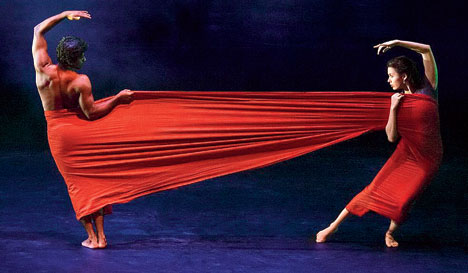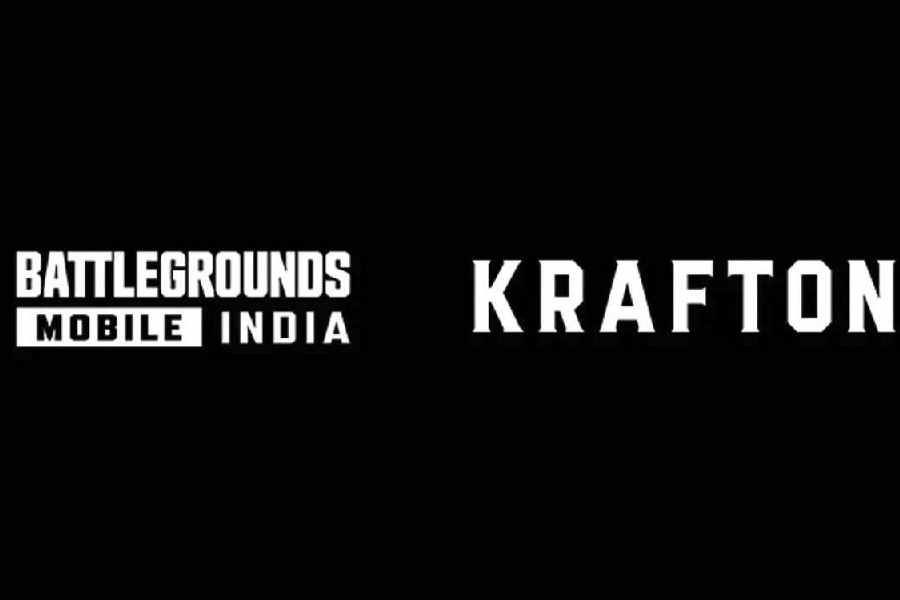
When you look at her graceful form draped in an off-white cotton sari with a yellow border, her more-salt-than-pepper wispy hair tied into a bun and a warm smile lighting up her still youthful face, it is hard, even if for a split second, to imagine her as the formidable Daksha Sheth who straddled the stage like a lioness in her younger days.
She has long yielded the centre stage to her disciples at the Daksha Sheth Dance Company — which include her two children, daughter Isha Sharvani and son Tao Issaro — but the spotlight remains on her as she continues to conceive and steer dance productions combining forms like Kathak, Mayurbhanj Chhau, Kalaripayattu and the aerial technique of Mallakhamb that she is known for.
“My basic interest lies in the departure from style so that you can use the body and its movements,” says Sheth, who was recently in Calcutta with Tao Issaro to deliver a talk at Samabhavana, organised by Sapphire Creations Dance Company in association with the ministry of culture and ICCR.
“She doesn’t change someone’s natural ability and works with what she has got and then conceptualises around that. We work with bodies — another thing that I think my mother is fantastic at,” says Tao.
The fluidity in movements and style that Sheth is so passionate about safeguarding extends to the narrative that she builds around it. “The direction that every concept that I am working on takes is what actually matters. I don’t start out with the intent to do this or that. Every work that I have started out with is always with the intent of creating a whole new language and not having to depend on any one form,” she says.

CHAOTIC BUT COLLECTIVE
The space for experimentation has allowed her children and her students to be forthcoming with their views as a work starts to take shape.
“We don’t really have a very intellectual approach and so very rarely have we sat down and thought about what we are going to do. We play with concepts, we experiment, we fail, sometimes we find something that we think is cool and then we work on it. In our creative sessions, often everyone is shouting at everyone, brimming with ideas. There is no hierarchy within the Daksha Sheth Dance Company,” says Tao, a musician and composer at the company who teams up with his father, Devissaro, to score the music for their productions and also works independently in Australia.
“And I love, love, love the fact that everyone is participating. Everyone is alive in that moment and I like to see what comes out of that and that is very important. I don’t want the past or the future. What happens at that moment in the present is the most precious,” Sheth says.
Tao says this attitude has developed in him a sense of openness and inclusion that he always carries with him, while admitting that working with one’s family all the time has its pitfalls too. “It’s chaotic. All the emotions one can possibly feel are felt. But no matter how hard it gets, we leave it in the studio and we go up and drink chai together and we are fine,” he adds, laughing.
Not one to fear or avoid a clash of ideas, Sheth says: “A creative process is never like walking on a bed of roses anyhow. We are all concerned with creating something that we are absolutely possessed with and we are passionate about it together.”
The family operates out of Natyashram, the arts centre near Thiruvananthapuram in Kerala, where the dance company works with interdisciplinary artistes.
Sheth’s daughter Isha is the lead dancer of the company, but it’s her husband who wears the most number of hats, apart from being its visual and musical director.
“Devissaro is the intellectual powerhouse and the dynamic force in our company. All the work we have done till today is not just Daksha Sheth alone. We both work together like one soul in two bodies and I am fortunate to have found that in my life partner. He is the editor, creative director, art and stage conceptualiser. I will never stage anything without his eyes,” Sheth says, smiling. “By the time we were working on Shiva Shakti in 2009, Tao and Isha were fully part of the creative process. Till before that, it was Devissaro and I who did everything.”
Though GenNext is coming to the forefront, Tao clarifies it’s mom and dad who have the final say. “Even when we are working independently, the final okay has to come from them. We are happy to help but Dev and Daksha are the boss,” says Tao.

Pictures: B. Halder
WEAVING A TALE
The themes that Sheth chooses are as diverse as the many styles she has worked with over the past five decades. One of their current productions, Sari, with which the company is travelling the world, is a lyrical, rhythmic tale woven around the flowy drape.
“I have a friend called Rta Kapur Chishti who has written 16 books on the sari. After her last book, she called me and talked about the plight of the weavers. So we wanted to create something that would make the younger generations aware of how many people and how much energy go into making this piece of cloth that I am wearing,” says Sheth, pointing at her handloom sari.
“We worked and created for about five years and had enough to put up five more productions! All the information on textiles, the weavers and its history was fascinating. Then started the ruthless process of editing and making it into a one-hour production. We are very cruel at editing,” she adds. Which explains why her productions pack so much power.
Sari was staged in Edinburgh, Birmingham and Glasgow as part of the UK/India Year of Culture 2017.











